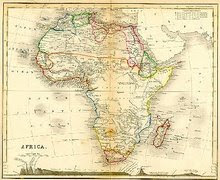 This week I decided to look up the number 28 just for "grins and giggles" and see what I found and I found the following on Wikepedia:
This week I decided to look up the number 28 just for "grins and giggles" and see what I found and I found the following on Wikepedia:It is a composite number, its proper divisors being 1, 2, 4, 7, and 14.
Twenty-eight is the second perfect number. As a perfect number, it is related to the Mersenne prime 7, since 22(23 - 1) = 28. The next perfect number is 496, the previous being 6.
Since the greatest prime factor of 282 + 1 = 785 is 157, which is more than 28 twice, 28 is a Størmer number.
Twenty-eight is a harmonic divisor number, a happy number, a triangular number, a hexagonal number,and a centered nonagonal number. Twenty-eight is the sum of the first five prime numbers, and the sum of the totient function for the first nine integers.
It appears in the Padovan sequence, preceded by the terms 12, 16, 21 (it is the sum of the first two of these).
It is also a Keith number, because it recurs in a Fibonacci-like sequence started from its base 10 digits: 2, 8, 10, 18, 28...
Twenty-eight is the third positive integer with a prime factorization of the form 22q where q is an odd prime.
Twenty-eight is the ninth and last number in early Indian magic square of order 3.
There are twenty-eight convex uniform honeycombs.
Twenty-eight is the second perfect number. As a perfect number, it is related to the Mersenne prime 7, since 22(23 - 1) = 28. The next perfect number is 496, the previous being 6.
Since the greatest prime factor of 282 + 1 = 785 is 157, which is more than 28 twice, 28 is a Størmer number.
Twenty-eight is a harmonic divisor number, a happy number, a triangular number, a hexagonal number,and a centered nonagonal number. Twenty-eight is the sum of the first five prime numbers, and the sum of the totient function for the first nine integers.
It appears in the Padovan sequence, preceded by the terms 12, 16, 21 (it is the sum of the first two of these).
It is also a Keith number, because it recurs in a Fibonacci-like sequence started from its base 10 digits: 2, 8, 10, 18, 28...
Twenty-eight is the third positive integer with a prime factorization of the form 22q where q is an odd prime.
Twenty-eight is the ninth and last number in early Indian magic square of order 3.
There are twenty-eight convex uniform honeycombs.
Absolutely none of this makes sense to me, but what struck me was that the "28" is the second "perfect" number (only after "6" which is the first perfect number).....Since we have already passed week "6", week 28 just seems the "perfect" time for our referral! However, if week 28 passes by, surely we won't have to wait for the next "perfect number" week seeing as it is number 496!!!













No comments:
Post a Comment